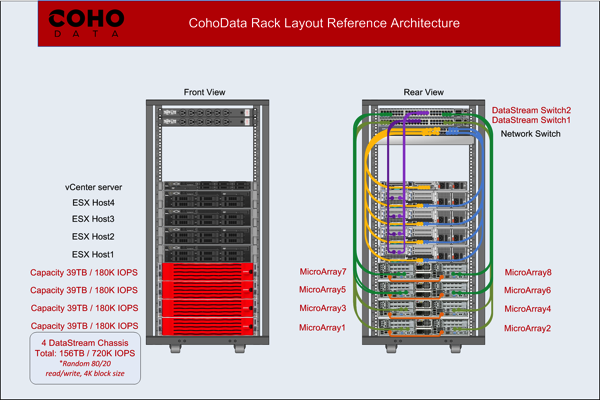This post is part of a series of 10 vendors that have presented their technology to the TechFieldDay attendees, gathered for this edition of Storage Field Day 4. You can find all background about the project here: http://techfieldday.com/event/sfd4/ – This series of blogposts were live notes, published at the end of the presentation but reviewed afterwards. Disclaimer: the attendees are not personally compensated other than our transport and lodging, nor are we obliged to write anything at all.

Company
- Founded: 2011
- Founders: Ramana Jonnala (CEO), Andy Warfield (CTO), Keir Fraser (Chief Architect)
- Financial Status: B-round
- CEO: Ramana Jonnala
Technology
The hardware are 2U SuperMicro 2 controller nodes with 4x10G per box (2x2x10) with an overall capacity of 40TB per box. In the box we have Xeon processors where higher Ghz has shown to give more result than more cores and some PCIe Flash for cashing. There is 1 Flash card per 10GbE controller One controller is called a “MicroArray”. The 10GbE backplane is connected to an OpenFlow SDN switch. The OpenFlow use of SDN switching. The switch includes the 1U “commodity” switch (Arista 7050). One of the advantages of using OpenFlow is instead of matching traffic per packet is that it can flow traffic per streams.

The baseline architecture of the system is an object based architecture. On top of the object based backend architecture Cohodata has build their datastream services that support NFS/iSCSI/SMB profiles as well as Mongo/Riak/Hadoop/… for fronted services. This way the solution fits instantly in your current environments but will be able to change/adopt to new services.
Some of the extra services on top of the data landing and handling is analytics. In the UI there is a lookback option to see what actually happened and the it would even tell you how IF there were issues how many extra nodes you’d need to get rid of the problems.
My Take
We were warned that COHO has a totally different approach to storage than the average startup. Most startups take a certain type of architecture and improve that either left or right and that becomes their added value or unique selling point. COHO takes a complete different approach. Both the fronted network based on OpenFlow as the backend Object storage architecture are really well done. Currently used filesystems all have their own challenges. Most of these challenges are towards data protection and footprint and ever more importantly scaling. iSCSI for example simply does not scale. Whatever you want to do with it, you will always run into compromises. Coho offers iSCSI but the backbone is object storage. As new software will start writing straight to object storage through API’s, Coho will be ready. Coho data is a new technology that can be implemented non-disruptively but is future proof!
Aside from the technology we have encountered a very scientific approach to every single step in the process. By testing all types of CPU’s for example they have proven that for their technology more Ghz was more important than more cores. So they chose 8-cores with higher Ghz instead of 10-cores with lower Ghz.
Links
- website – http://www.cohodata.com
- twitter – @cohodata
Video
Here are the 5 parts of the Storage Field Day 4 presentation:
- Introduction – Why Coho Data?
- Architecting for “programmatically fast flash”
- Building a distributed flash system with SDN
- Architecture DeepDive
- Customer Use Case